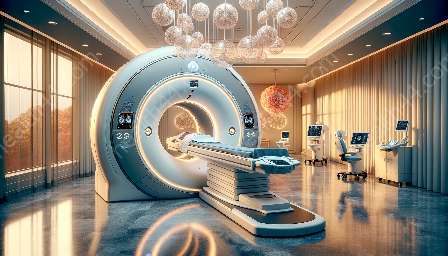Orthopedic implants and instruments play a crucial role in the field of medical devices and equipment. They are essential in the diagnosis, treatment, and rehabilitation of musculoskeletal injuries and conditions. In addition, the integration of medical imaging devices further enhances the accuracy and precision of orthopedic procedures.
This topic cluster aims to examine the intricate relationship between orthopedic implants and instruments and medical imaging devices, as well as their overall impact on the medical devices and equipment industry. From exploring the latest technological advancements to understanding the applications of these devices in clinical settings, this comprehensive discussion will provide insight into the intersection of these critical healthcare components.
Understanding Orthopedic Implants and Instruments
Orthopedic implants and instruments are designed to address various musculoskeletal disorders, fractures, and degenerative conditions. These essential medical devices are utilized in orthopedic surgeries, including joint replacements, fracture fixations, and spinal procedures. The development of innovative implant materials and advanced instrumentation has significantly improved patient outcomes, leading to enhanced mobility and quality of life for individuals suffering from orthopedic ailments.
Furthermore, orthopedic implants encompass a wide range of devices, including artificial joints, screws, plates, rods, and wires, tailored to meet the specific needs of patients. These implants are meticulously engineered to replicate the function and structure of the human musculoskeletal system, promoting successful surgical interventions and long-term stability.
Evolution of Medical Imaging Devices
Medical imaging devices have revolutionized the field of orthopedics by enabling clinicians to visualize anatomical structures and pathological conditions with remarkable precision. Various imaging modalities, such as X-ray, computed tomography (CT), magnetic resonance imaging (MRI), and ultrasound, offer comprehensive insights into bone morphology, soft tissue injuries, and joint disorders. These imaging technologies facilitate accurate diagnosis, preoperative planning, and postoperative assessment, contributing to improved treatment strategies and patient care.
Moreover, the integration of advanced imaging techniques, such as 3D reconstruction and virtual simulation, has elevated the capabilities of medical imaging devices, allowing surgeons to optimize implant placement and surgical approaches. As a result, orthopedic procedures are now conducted with unparalleled accuracy and efficiency, leading to enhanced surgical outcomes and reduced complications.
Synergy of Orthopedic Implants, Instruments, and Medical Imaging Devices
The seamless integration of orthopedic implants, instruments, and medical imaging devices constitutes a powerful synergy in the realm of medical devices and equipment. By harnessing the collective strengths of these technologies, healthcare providers can offer personalized treatment solutions and tailored surgical interventions, catering to the individual needs of patients.
Furthermore, the collaborative synergy between orthopedic implants, instruments, and medical imaging devices leads to enhanced procedural planning, intraoperative guidance, and postoperative assessment. This multidisciplinary approach fosters a comprehensive understanding of musculoskeletal pathologies, thereby optimizing treatment outcomes and promoting patient satisfaction.
Advancements in Medical Devices & Equipment
The continuous advancements in medical devices and equipment have propelled the orthopedic industry towards unprecedented innovation and transformative solutions. From the development of miniaturized implants to the integration of smart instrumentation and robotic-assisted technologies, the landscape of orthopedic interventions has evolved significantly, catering to the evolving demands of modern healthcare.
Additionally, the convergence of orthopedic implants, instruments, and medical imaging devices has paved the way for personalized medicine, where patient-specific implants and customized surgical approaches are becoming increasingly prevalent. These groundbreaking developments not only streamline surgical workflows but also ensure optimal functional restoration and long-term durability for patients undergoing orthopedic procedures.
Future Perspectives and Emerging Technologies
The synergy between orthopedic implants and instruments, medical imaging devices, and medical devices & equipment is poised to witness further advancements and innovations in the coming years. The integration of artificial intelligence, augmented reality, and wearable technologies is set to redefine the landscape of orthopedic interventions, fostering enhanced precision, efficiency, and patient outcomes.
Moreover, the collaboration between industry stakeholders, orthopedic surgeons, and imaging specialists will drive the development of next-generation implant materials, minimally invasive instrumentation, and image-guided surgical platforms, revolutionizing the practice of orthopedic medicine. This collective pursuit of excellence will ensure that orthopedic implants and instruments, coupled with advanced medical imaging devices, continue to shape a future where musculoskeletal healthcare reaches new frontiers of effectiveness and patient-centric care.


